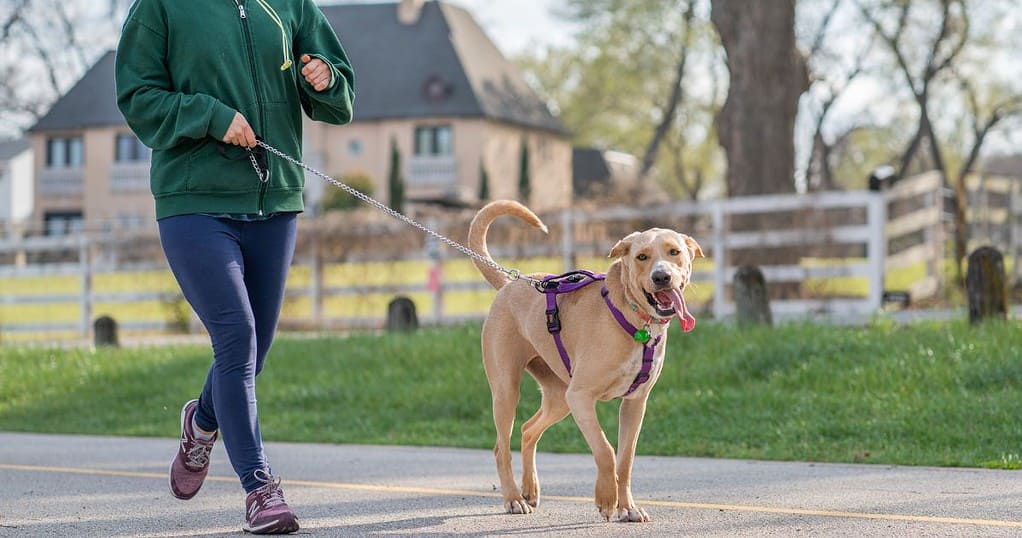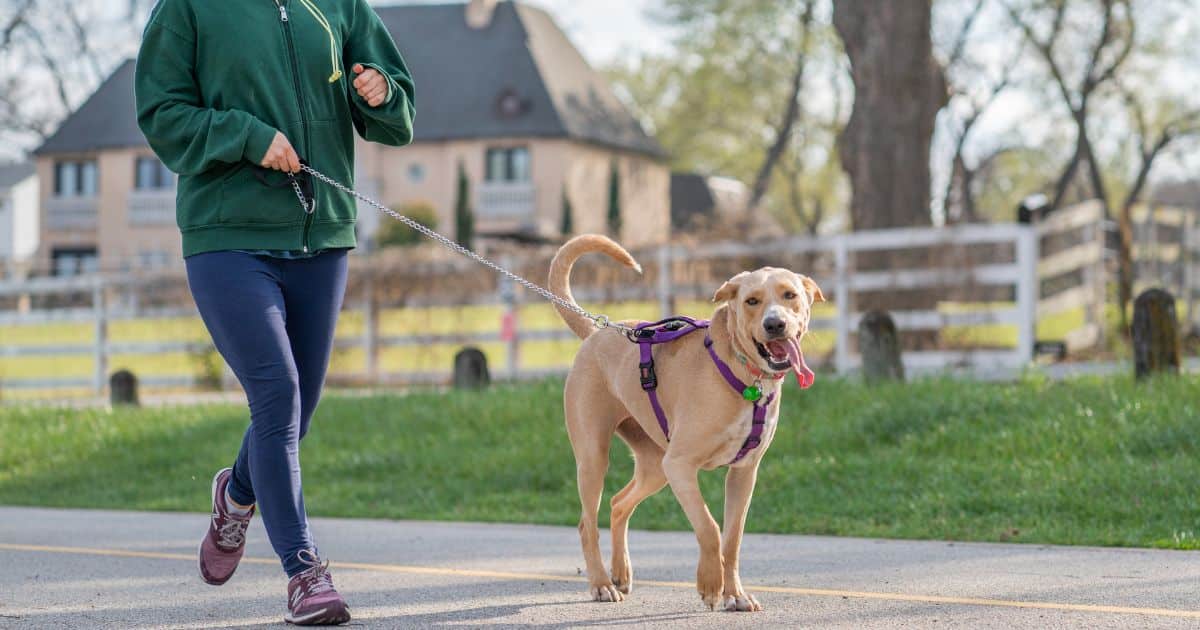Starting a dog walking or dog sitting business can be a great way to make money and have flexible hours. This can be especially helpful for people who are out of work, on a fixed income, retired, students, or work hospitality jobs and odd hours anyway.
But it goes beyond that. The joys of hanging out with dogs (or even some cats) while ensuring our furry canine friends get out for a stretch of the legs or bathroom break can be rewarding and strangely satisfying, as far as jobs go.
And it’s not all that hard, but you’ll want to be prepared.
A Crash Course in Dog Sitting
There are a lot of benefits to taking care of dogs and getting compensated. You might not get rich right off the bat, but extra money never hurts and you’ll get free companionship, exercise, and entertainment out of the deal too.
Let’s look at the benefits of starting a dog walking or dog sitting business:
- Flexible hours: You can set your own hours and work as much or as little as you want. This can be a great way to fit your business around your other commitments, such as school, work, or family.
- No experience necessary: You don’t need any formal experience to start a dog walking or dog sitting business. However, it is helpful to have some experience with dogs and to be familiar with their needs.
- Low startup costs: You can start a dog walking or dog sitting business with very little money. You will need to invest in some basic supplies, such as a leash, collar, and waste bags. However, these costs are relatively low.
- High demand: There is a high demand for dog walkers and dog sitters. This is because many people are busy with work or other commitments and don’t have time to take care of their dogs themselves. Location can also play into this as well, as high-tourism areas may get more business from travelers who need some time to themselves.
- Fun and rewarding: Dog walking and dog sitting can be a lot of fun and rewarding. You get to spend time with dogs, which can be very therapeutic. You also get to help people by providing them with a much-needed service.
At the end of the day, we’re pretty lucky to get paid to walk other people’s dogs, when you put it into perspective. In many countries around the world, people ignore the many dogs which begin to crowd street corners as strays, begging or foraging for their next bite to eat, if they’re lucky enough to find something.
How to Become a Dog Walker or Pet Sitter
Before we get to the business side of the deal, let’s get a little Pet Sitting 101 out of the way.
It’s important to do the things that are recommended and avoid the things that dogs don’t like to gain success when you start your dog walking business, or even if you just get a job as a dog walker or sitter from someone else.
Here are some important topics someone learning about how to care for dogs might like to know to help them feel more confident around dogs, taking them for a walk, and avoiding common mistakes:
- Dog body language: Learning to understand dog body language is essential for interacting with dogs safely and confidently. Some important things to look for include:
- Ear position: Ears that are pinned back or held low can be a sign of fear or aggression.
- Tail position: A wagging tail can be a sign of happiness or excitement, but a tail that is held high and stiff can be a sign of aggression.
- Mouth: A dog that is showing its teeth or licking its lips may be feeling threatened or anxious.
- Eyes: A dog that is avoiding eye contact or has dilated pupils may be feeling stressed or scared.
- Dog training: Basic obedience training is essential for all dogs, but it is especially important for dogs that will be around children or other animals. Some basic commands to teach your dog include sit, stay, come, and down.
- Dog walking: Taking your dog for regular walks is important for their physical and mental health. When walking your dog, be sure to keep them on a leash and avoid areas where there are other dogs that may be aggressive.
- Dog socialization: Socializing your dog with other dogs and people is important for their development. This will help them learn how to behave in different situations and avoid becoming fearful or aggressive.
- Dog health and grooming: Keeping your dog healthy and groomed is essential for their overall well-being. This includes regular brushing, bathing, and nail trimming.
- Dog behavior: Understanding dog behavior is important for preventing problems and ensuring a happy and healthy relationship between you and your dog. Some common behaviors to watch out for include barking, jumping, and chewing.
Avoid Common Human Mistakes When Walking or Sitting Pets
Here are some common mistakes that humans make when handling an animal:
- Forcing the dog to do something it doesn’t want to do. This can lead to fear, aggression, or even biting.
- Not respecting the dog’s personal space. Dogs need their own space, just like humans. Don’t force them to cuddle or pet them if they don’t want to.
- Not giving the dog enough exercise. Dogs need regular exercise to stay healthy and happy. If they don’t get enough exercise, they can become destructive or aggressive.
- Not training the dog. A well-trained dog is a happy dog. Taking the time to train your dog will help them learn how to behave and avoid problems.
- Not socializing the dog. Socialization is important for dogs to learn how to interact with other dogs and people. If a dog is not socialized, they can become fearful or aggressive.
By learning about these important topics, you can become more confident around dogs and avoid making common mistakes. This will help you create a happy and healthy relationship with your furry friend.
Dogwalking Business Tips
Remember: a dog walking or sitting business is still a business. That means being prepared and learning some customer service basics.
You’ll get way more customers, repeat customers, and referrals by treating your clients like kings and queens. In addition to being polite, well-mannered, presentable, and professional in your demeanor, there’s a few other things you can do too.
Here are some additional tips for starting a dog walking or dog sitting business:
- Get certified: There are many different certifications available for dog walkers and dog sitters. Getting certified can show potential clients that you are qualified and experienced. Taking a course at an animal shelter can help you with this too.
- Be reliable and trustworthy: This is essential for any dog walker or dog sitter. Make sure you always show up on time and that you take good care of the dogs you are responsible for.
- Be flexible: Be prepared to work different hours and days, and to travel to different locations.
- Love animals! This is probably the most important tip of all. If you don’t love animals, you probably won’t enjoy being a dog walker or dog sitter.
- You are being watched: Yep, the affordability of home monitoring equipment like surveillance cameras for around $100 mean that the house owner is probably watching you while you’re paying your visit. Don’t skimp on any promises you made, like how long you’ll be taking the dogs out for and how much time you’ll be there with them. People expect what they pay for!
Conclusion: Become a Dog Walker or Dog Sitter

Follow these tips to maximize your success early on, but remember that experience is a fantastic teacher as well. Starting a dog walking or dog sitting business can be a great way to make money and have flexible hours.
In doing so, you can increase your chances of success.You might think it would never happen to you, but yes, even you might one day find yourself asking, “How do I become a dog walker?“
Think it sounds crazy?
Give it a shot. Who couldn’t use a random $100 – $500/month to make ends meet these days?
- A Disabled Veteran’s Perspective on Homelessness in America - September 11, 2025
- A Consumer’s Take on Auto Refinance: My AutoPay Story - August 22, 2025
- Summertime Squatters: A City Dweller’s Guide to Avoiding Bed Bugs - July 30, 2025



